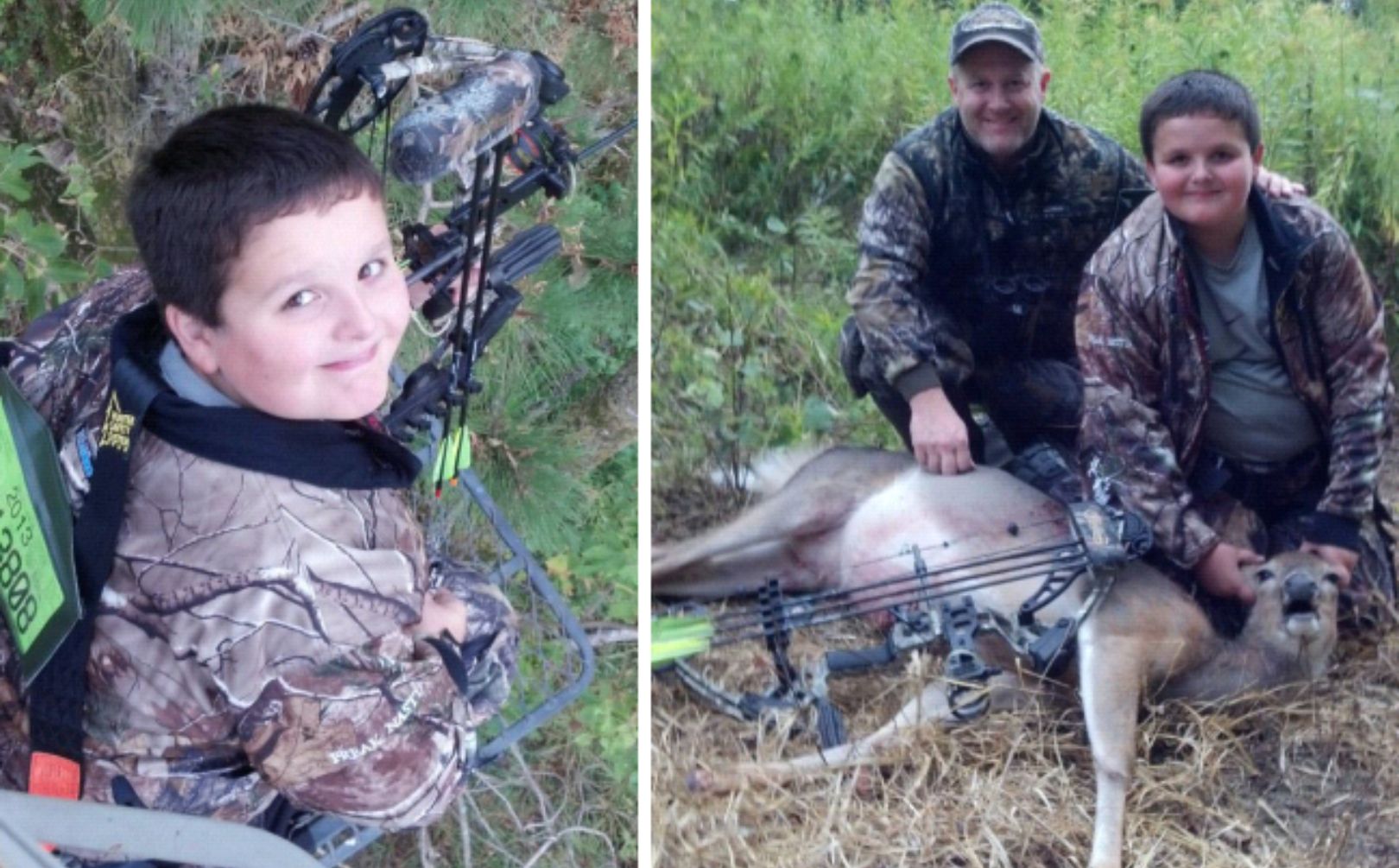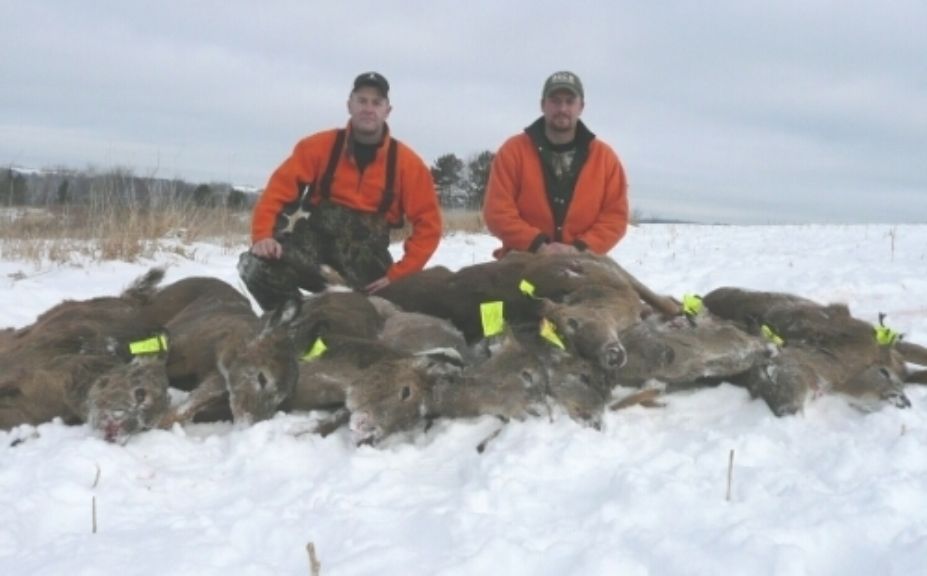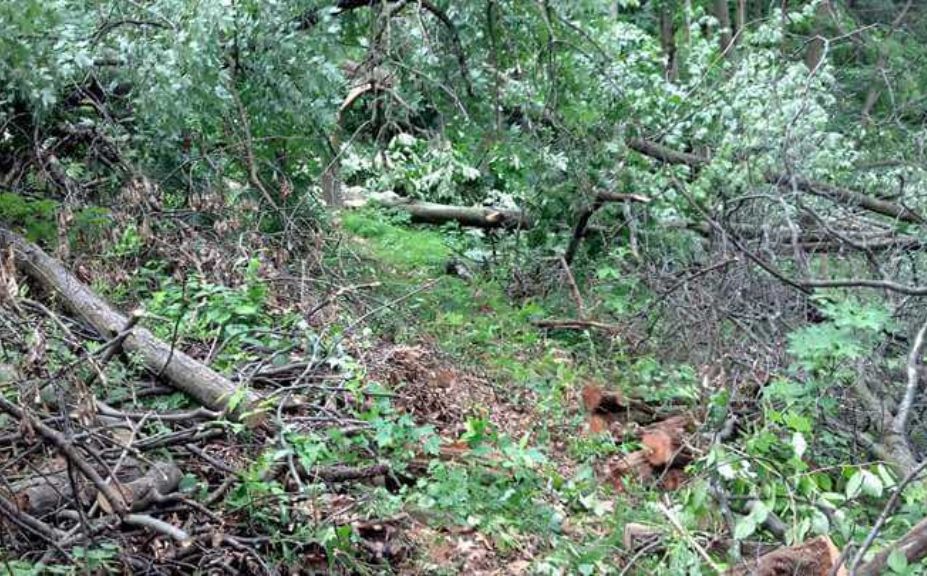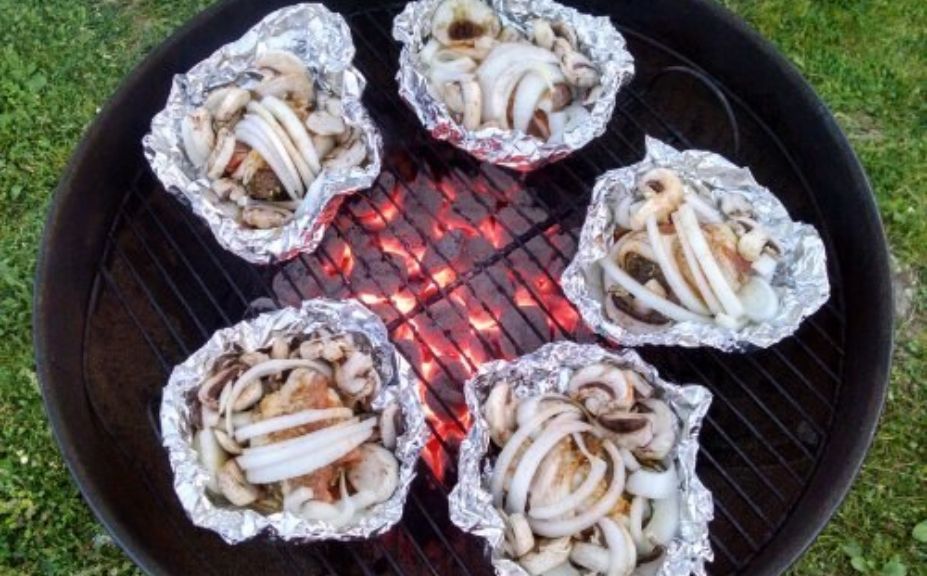
Doe management is important, but there is certainly a "Time and a Place" to get it done as it relates to hurting or helping your hunting and habitat efforts.
*Make sure to check out my whitetail book series including, "Whitetail Success By Design" and "Food Plot Success By Design", to help you find mature bucks this hunting season!
My favorite period of the hunting season to practice precision doe management is during the late season, after the local deer herd has been lulled into a false sense of security on large, hidden and un-pressured food sources. During a Mid-December doe hunt a hunting buddy and I were able to shoot 9 antlerless deer in just 1 day alone! However there is a quieter, more subtle approach that you can take advantage of during the early season, with a bow and arrow. How do you keep it "quiet"? Follow along and I will detail a few points that I feel are critical for early season Doe Management Success:
1. Timing:
I love hunting bucks, and shooting does and what I mean by that is while I happily take part in shooting enough does to keep the overall population in check, the challenge of hunting I enjoy the most is attempting to pattern and kill a mature buck. With the exception of planned doe shoots, my hunting activities largely revolve around my passion for trying to scout, plan, hunt and harvest a mature buck. But even when hunting for a mature buck, I will not pass up the opportunity to shoot a doe if the conditions are favorable for a non-invasive harvest. During the early season I specifically target does at the end of a either an evening, or morning sit. I often enjoy a great evening hunt for a mature buck, and am able to shoot a doe in the last 15 minutes of shooting light. I still have the opportunity to sit for a few hours in the location while trying to carry out my "strategy" of potentially running into a mature buck, while still being able to take advantage of the movements of a mature doe during the same sit.

*Does should be easy to harvest because they follow predictably rigid daily movement patterns. If they are not, changes in hunting style need to take place! Try these tips for efficient doe harvest by reading, "Easy Doe Hunting Equals Herd Success".
2. A "Sure Shot":
Not that taking a marginal chance is ever appropriate, but 1/2 mile searches through my best of bedding cover for a wounded doe is not a great prescription for success for the weeks that follow! A quartering away shot at less than 20 yards is a great start to making a short tracking job of an early season doe harvest.
In 2009 I was nearing the end of an early October morning hunting for a mature buck I was after, when a mature doe began browsing my way. She soon became pointed downhill towards the truck, broadside and slightly quartering away. A well placed shot left her to expire within 100 yards of the truck and near our access trail, for a quick, clean and efficient low impact harvest.
3. Easy Access:
Making a good shot, and then being able to locate the doe within 100 yards of the shot is great, but if you add in a 50 yard drag to the truck through non bedding cover; even better!
It is very important that no bedding areas have to be searched through, and no food sources pressured, during your hunt. One of my hunting tactics I typically rely on, helps greatly in my efforts to reduce my impacts for early season doe management. When I sit in a stand, I like to make sure that my access side contains low quality, deerless cover. If a doe is traveling into these areas, it creates the perfect opportunity for a quick harvest that features a high probability you will not have to enter any deer habitat hotspots. Not only can you have great chance that an expiring doe will not expire within a high deer traffic area, but you can potentially drag the deer back through the same access that you used to enter the stand in the first place.

*Practicing low impact doe management tactics while maintaining the sanctuary of your land, will ultimately determine your potential to build a quality herd. To make sure that your hunting tactics match the quality of your herd management goals, try reading "Strategies For Creating A Deer Sanctuary".
4. Bedding and Feeding Area Protection:
Long movements between "Habitat Hotspots" such as bedding areas or food sources is another critical aspect of low impact early season doe management efforts. In a 2012 hunt, a doe family group of 5 came close and I was really itching to take the lead doe. They had just exited a bedding area a minimum of 100 yards away, and around the point. When she passed me, stood around for a while, got a whif of my scent and started to blow in alarm, it was time for a shot! Best of all she was traveling directly away from the bedding area and still hundreds of yards from the major food source of destination so both areas were not be effected.
5. Cool Temperatures:
I typically only hunt cold fronts, which is an outstanding conditions for an early season doe harvest! The venison will remain fresh and unspoiled, even if you end up with a poorly executed the shot and have to let your deer lay overnight. And with cold temperatures and fresh venison, my mind is typically focused on grilling backstraps with some friends and family after exiting the woods-there is nothing better!
6. Stand Preservation:
Although a few of the stands that you may shoot a doe of could be some of your best mature buck locations for the rut, there are still several weeks of "forgiveness" to allow for the stand site to settle down.
Conclusion
The early bow season is an exceptional time for a quiet doe harvest or two. At the same time, what a great way to help calm the nerves with a little live practice before a mature buck happens to walk into range. The WI bow season opener is less than a month away, and I hope to immediately celebrate the harvest with close friends and family, a grill, and a pair of backstraps. What an awesome potential beginning to the season, while at the same time practicing some important doe management activities.

If you find early season success, click HERE for a tasty Venison Recipe!